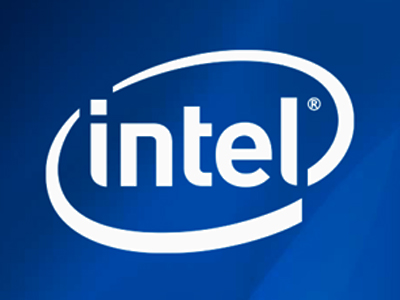Intel Launches New Graphics Driver for Iris, Iris Pro
On Wednesday, Intel introduced a new graphics driver for its Iris and Iris Pro GPUs on Intel Core "Haswell" processors. The driver is offered in 32-bit and 64-bit flavors, promising "significant" performance improvements with the company's Conservative Morphological Anti-Aliasing (CMAA), which smooths the visually annoying jaggies in games for the PC.
Intel's release notes state that CMAA offers a higher-quality anti-aliasing effect without a performance impact when compared to MLAA and FXAA. To turn it on, customers merely head into the Intel Graphics control panel. The trick is that the feature must be turned on before playing a game and then turned off after the gamer is done so that "unintended" blurring doesn't take place in other applications.
"To reduce the probability of unintended blurring, certain applications are automatically excluded from the support list: Windows Explorer, login screen, Windows home screen, Internet Explorer, Google Chrome, and Firefox browsers, and the Windows 8.1 Photo application," the release notes said.
In addition to the CMAA performance, Intel announced that this driver enhances the performance of Batman Arkham City (10 percent), Brink (12 percent), Doom 3: BFG Edition (84 percent), F1 2012 (8 percent), Hitman: Absolution (10 percent), and Sleeping Dogs (11 percent). Even more, games that receive an FPS gain between 3 percent and 7 percent include Battlefield 4, Civilization V, Deus Ex, Metro 2033, Rage, The Elder Scrolls V: Skyrim and Sniper Elite 2.
According to a list of new features, the driver provides up to 30 percent performance improvement in OpenCL applications, improvements to the control panel, and battery life improvement in casual games, aka "Adaptive Rendering".
Intel points out that many casual games, such as Angry Birds, have very little change on the screen; the same scene is rendered in each frame. That's a waste of power, the company indicates, and impacts the life of the battery. With the new Adaptive Rendering feature, the driver compares each frame and manages the frame rate to save power. If the scenery in the frames keeps changing, then Intel's tech doesn't interfere.
Adaptive Rendering is not turned on when the computer is set to maximum performance or when the computer is plugged into an electrical outlet.
Get Tom's Hardware's best news and in-depth reviews, straight to your inbox.
The full release notes are located here in a PDF format.
Follow Kevin Parrish @exfileme. Follow us @tomshardware, on Facebook and on Google+.

Kevin Parrish has over a decade of experience as a writer, editor, and product tester. His work focused on computer hardware, networking equipment, smartphones, tablets, gaming consoles, and other internet-connected devices. His work has appeared in Tom's Hardware, Tom's Guide, Maximum PC, Digital Trends, Android Authority, How-To Geek, Lifewire, and others.
-
photonboy I can see Adaptive Rendering getting really annoying but hopefully it's smart enough to say drop to 15FPS only when there's minimal screen changes so we don't perceive the sluggishness.Reply
The issue will be if the screen is still thus the FPS drops and it takes too long to go back to 60FPS so we keep getting stutter or sluggishness issues. -
shafe88 Benchmark's please.Reply
Hopefully it doesn't give too much of a graphics performance increase, as the will give AMD and their APU's less of a fighting chance. -
ingtar33 wow. isn't this the first driver release for iris pro since it's release? awesome driver support intel. can we open more then 10 browser tabs without being bogged down with this driver release? How about color/graphic issues with 90% of non-benchmark gaming titles?Reply
Iris/Iris pro is awesome tech with almost no driver support. -
rdc85 Are this is the case that blurring/lower the quality of the image to gain extra fps? (that kinda cheating)Reply
need more in-deep review about this.. -
rootheday @ingtar33 - I have intel graphics in my work laptop (HD 4000, Ivybridge so slower than the HD4400/4600/Iris Haswell gpus) - i often have 2 dozen browser tabs open with no lag. Intel has been putting out 4-6 WHQL driver updates a year for the last 2+ years + they have recently also been putting out public betas, usually aligned to game launches (Thief, Titanfall, Grid Autosport are recent examples).Reply
Regarding color/graphics issues on "90%" of games - citation needed please. Go look at Youtube for HD4000/4400/4600 - there are hundreds of videos posted by people playing all manner of games, popular and obscure with no issues. Are the Intel drivers perfect? no, but then neither are AMDs or NVidias.
@rdc85 - If you are referring to CMAA, it isn't cheating - it is a post-postprocessing AA approach similar to FXAA or MLAA based on findng jaggies in edges and smudging them a tad; much less bandwidth and perf hit than normal MSAA but better looking than no AA at all. Recommend you read the article. Some games implement these kinds of AA in the game menus (Deus Ex, for example); Intel is just offering it as a control panel option for games that don't. -
Shin-san Ah, I seriously needed some new drivers to come out. I had a few graphical glitches with Intel graphics, so hope this helpsReply -
Merry_Blind CMAA?? Never heard of that before. Anyone has experience with it? How does it compare to Nvidia's FXAA (when it's forced through the control panel it's not that great except for games with simple or cartoony visuals)Reply -
hannibal Well the Intel is the biggest GPU maker in the world so it don't have to make driver updates every year ;-) Why bother...Reply
